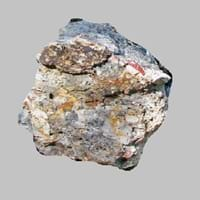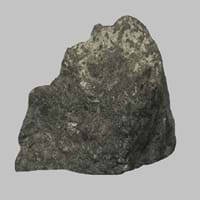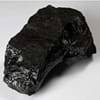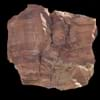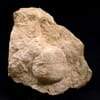Definition
Novaculite is a dense, hard, fine-grained, siliceous metamorpic rock which is a type of chert that breaks with conchoidal fracture
Phonolite is an uncommon extrusive igneous rock volcanic rock of intermediate chemical composition between felsic and mafic
Discoverer
Unknown
Unknown
Etymology
From Latin word novacula, for razor stone
From the Greek meaning sounding stone because of the metallic sound it produces if an unfractured plate is hit
Class
Sedimentary Rocks
Igneous Rocks
Sub-Class
Durable Rock, Hard Rock
Durable Rock, Medium Hardness Rock
Group
Not Applicable
Not Applicable
Other Categories
Fine Grained Rock, Opaque Rock
Fine Grained Rock, Opaque Rock
Texture
Banded, Glassy, Rough, Vitreous
Granular
Color
Black, Brown, Green, Grey, Red, White
Brown, Buff, Cream, Green, Grey, Pink, White
Durability
Durable
Durable
Scratch Resistant
Yes
Yes
Appearance
Glassy or Pearly
Banded and Foilated
Interior Uses
Countertops, Decorative Aggregates, Flooring, Interior Decoration
Countertops, Decorative Aggregates, Flooring, Homes
Exterior Uses
As Building Stone, Garden Decoration
As Building Stone, As Facing Stone, Garden Decoration, Office Buildings, Paving Stone
Other Architectural Uses
Curbing
Curbing
Construction Industry
Arrowheads, Building houses or walls, Cement Manufacture, Construction Aggregate, Cutting Tool, for Road Aggregate, Knives, Landscaping, Making natural cement, Production of Glass and Ceramics, Rail Track Ballast, Roadstone, Spear Points, Used to sharpen metal tools and weapons
As Dimension Stone, Cement Manufacture, Construction Aggregate, for Road Aggregate, Landscaping, Making natural cement, Manufacture of Magnesium and Dolomite Refractories, Production of Glass and Ceramics
Medical Industry
Not Yet Used
Not Yet Used
Antiquity Uses
Artifacts, Monuments
Artifacts, Monuments, Sculpture
Commercial Uses
Cemetery Markers, Gemstone, In aquifers, In fire-starting tools, Jewelry, Manufacture of tools, Pebbles are used in ball mills to grind in ceramics industry, To determine the gold content of jewelry
Cemetery Markers, Creating Artwork
Types
Not Available
Kenyte
Features
Clasts are smooth to touch, Easily splits into thin plates, Has High structural resistance against erosion and climate
Application of acids on the surface causes cloudy frosting, Available in Lots of Colors and Patterns, Dissolves in hydrochloric acid, Is one of the oldest rock
Archaeological Significance
Famous Monuments
Data Not Available
Data Not Available
Sculpture
Not Yet Used
Used
Famous Sculptures
Not Applicable
Data Not Available
Pictographs
Not Used
Used
Petroglyphs
Not Used
Used
Figurines
Not Yet Used
Used
Formation
Novaculite forms when microcrystals of silicon dioxide grow within soft sediments that become limestone or chalk. The formation of Novaculite can be either of chemical or biological origin.
Phonolite are formed due to alkaline igneous activities and are generally formed in thick continental crustal areas or in Cordilleran subduction zones.
Mineral Content
Quartz, Silicon
Albite, Amphibole, Biotite, Cancrinite, Feldspar, Hornblende, Plagioclase, Pyroxene, Sodalite
Compound Content
Ca, Silicon Dioxide
Aluminium Oxide, CaO, Iron(III) Oxide, FeO, Potassium Oxide, MgO, MnO, Sodium Oxide, Phosphorus Pentoxide, Silicon Dioxide, Titanium Dioxide
Types of Metamorphism
Not Applicable
Contact Metamorphism
Types of Weathering
Not Applicable
Chemical Weathering, Mechanical Weathering
Types of Erosion
Chemical Erosion, Coastal Erosion, Glacier Erosion
Chemical Erosion, Coastal Erosion, Water Erosion, Wind Erosion
Grain Size
Fine Grained
Fine Grained
Fracture
Conchoidal
Conchoidal to Uneven
Porosity
Less Porous
Less Porous
Luster
Waxy and Dull
Greasy to Dull
Cleavage
Non-Existent
Poor
Toughness
1.5
Not Available
Specific Gravity
2.5-2.7
2.6
Transparency
Translucent to Opaque
Translucent to Opaque
Density
2.7 g/cm3
2.6 g/cm3
Specific Heat Capacity
Not Available
Resistance
Heat Resistant, Impact Resistant, Pressure Resistant, Wear Resistant
Heat Resistant, Impact Resistant, Wear Resistant
Deposits in Eastern Continents
Asia
China, India, Iran, Japan, Oman, Russia, Saudi Arabia, Taiwan, Thailand, Vietnam
Indonesia, Iran, Russia, Saudi Arabia, Sri Lanka, Taiwan, Thailand, Turkey, Turkmenistan, Vietnam
Africa
Kenya, Morocco, South Africa, Tanzania
Angola, Egypt, Madagascar, Namibia, Nigeria, South Africa
Europe
Austria, France, Greece, Italy, Malta, Poland, Portugal, Serbia, Spain, Sweden, United Kingdom
Andorra, Finland, France, Germany, Great Britain, Italy, Norway, Portugal, Spain, Sweden
Others
Greenland, Mid-Atlantic Ridge
Greenland
Deposits in Western Continents
North America
Canada, Mexico, USA
Canada, USA
South America
Bolivia, Brazil
Brazil, Chile, Colombia, Uruguay, Venezuela
Deposits in Oceania Continent
Australia
New South Wales, Queensland, South Australia, Western Australia
New Zealand, Queensland, South Australia, Tasmania, Western Australia
All about Novaculite and Phonolite Properties
Know all about Novaculite and Phonolite properties here. All properties of rocks are important as they define the type of rock and its application. Novaculite belongs to Sedimentary Rocks while Phonolite belongs to Igneous Rocks.Texture of Novaculite is Banded, Glassy, Rough, Vitreous whereas that of Phonolite is Granular. Novaculite appears Glassy or Pearly and Phonolite appears Banded and Foilated. The luster of Novaculite is waxy and dull while that of Phonolite is greasy to dull. Novaculite is available in black, brown, green, grey, red, white colors whereas Phonolite is available in brown, buff, cream, green, grey, pink, white colors. The commercial uses of Novaculite are cemetery markers, gemstone, in aquifers, in fire-starting tools, jewelry, manufacture of tools, pebbles are used in ball mills to grind in ceramics industry, to determine the gold content of jewelry and that of Phonolite are cemetery markers, creating artwork.
